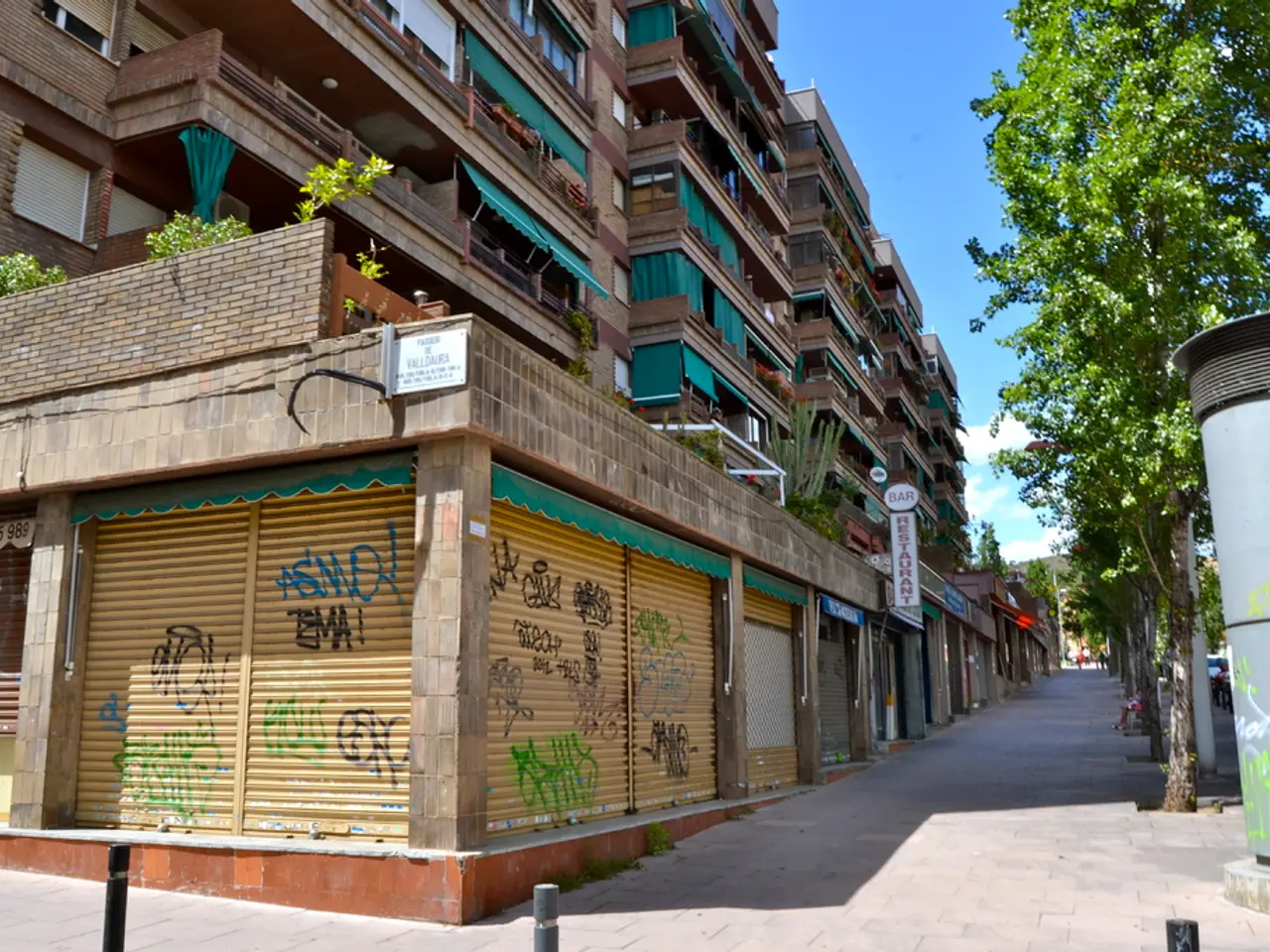Explore the organic process of carbon sequestration in nature at Kew Gardens, located in London
Kew Gardens, one of the world's leading botanical institutions, has unveiled its latest exhibit: the Carbon Garden. This innovative space aims to educate visitors about the role of carbon in ecosystems, its critical connection to the climate crisis, and how nature-based solutions can help combat global warming.
The Carbon Garden showcases over 6,500 plants and 35 new trees, creating a vibrant and immersive display that illustrates carbon capture, storage, and ecosystem resilience. The exhibit is divided into various sections, each highlighting different strategies for promoting a more sustainable future.
Upon entering the garden, visitors are greeted by a bold climate stripes display, featuring colourful flowers that depict rising global temperatures. This is followed by a soil profile, rocky outcrop, and exposed coal seam, representing carbon storage below ground.
The garden then transitions to a "dry garden," showcasing drought-tolerant plants from Mediterranean climates, demonstrating future climate-resilient planting. Visitors then move on to rain gardens, bioswales, grasslands, and native hedgerows, which emphasise the role of biodiversity in carbon storage and water management.
The centrepiece of the Carbon Garden is an umbrella-like pavilion, not quite a plant nor a mushroom, designed by Mizzi Studio and engineered by AtelierOne. Made from natural materials, including a granite base, European larch trunk, and a moulded top from natural fibres like linen, the pavilion serves as a rainwater collector, recycling water for the plants. It also functions as a venue for educational visits and community events.
Richard Wilford, Kew’s Head of Garden Design, describes the Carbon Garden as "a call to action." The exhibit is designed as a circular path moving from dry, drought-adapted plants to wetter, rain-managed sections, educating visitors on how plants and ecosystems naturally capture and store carbon, and how human actions can promote ecological balance.
Wilford, the curator of the Carbon Garden, expresses hope that the exhibit will inspire visitors to join in shaping a more sustainable future. The Carbon Garden offers a unique opportunity to inspire visitors to act and contribute to a more sustainable, resilient future for life on our planet.
References: [1] Kew Gardens (2023) Carbon Garden. Available at: https://www.kew.org/visit-kew-gardens/whats-on/carbon-garden [2] Mizzi Studio (2023) Carbon Garden. Available at: https://mizzistudio.com/projects/carbon-garden [3] AtelierOne (2023) Carbon Garden. Available at: https://www.atelierone.co.uk/project/carbon-garden [4] The Guardian (2023) Kew Gardens unveils Carbon Garden as part of bid to combat climate change. Available at: https://www.theguardian.com/uk-news/2023/apr/01/kew-gardens-unveils-carbon-garden-as-part-of-bid-to-combat-climate-change
- The Carbon Garden, an innovative exhibit at Kew Gardens, showcases various strategies of environmental-science, particularly focusing on how lifestyle changes and home-and-garden choices can contribute to carbon capture and climate-change mitigation.
- As a culmination of educational visits and community events, the Carbon Garden at Kew Gardens serves as a vibrant platform for raising awareness about the role of the environment and science in addressing the climate crisis, inspiring visitors to shape a more sustainable future.




